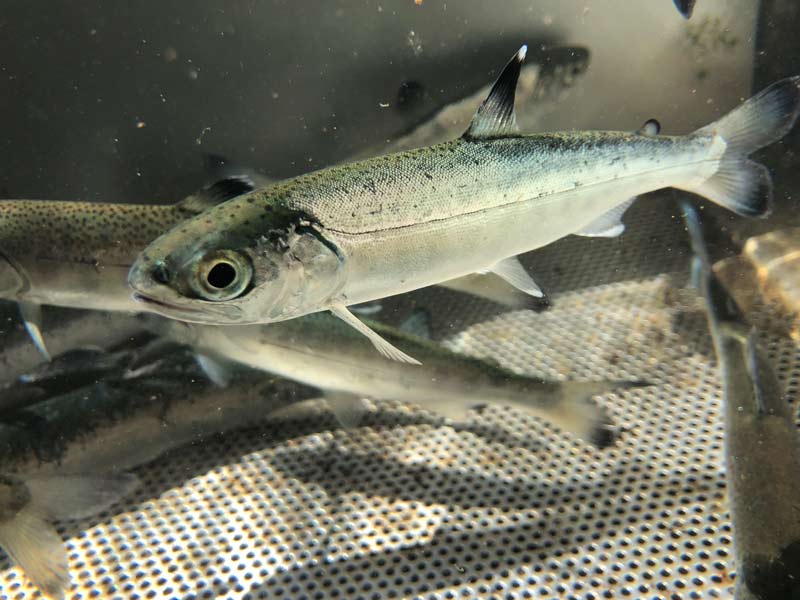Protecting Fish

The Clackamas River Basin is home to one of the strongest salmon and steelhead runs in the Willamette Valley.
We’re invested in fish
PGE has spent more than $90 million since 2006 to modernize and improve our passage systems on the Clackamas that salmon and steelhead use to migrate past our dams. We’ve also updated our fish ladder at River Mill dam to accommodate Pacific lamprey, an important but often-overlooked fish species in the Pacific Northwest. Our work is guided by a federal license and partnerships with non-profit organizations and local, state and federal agencies working together to protect and restore the Clackamas.

With our team of innovative biologists leading the way we’ve made significant investments to support and strengthen the river’s robust fish runs.
Signs of success
With our dedicated team of biologists in the lead, we've built safe and effective fish passage systems near our dams and collaborated with our partners to restore habitat throughout the river basin. Our success shows in the growing number of wild fish migrating up and down the Clackamas, and in positive shifts in fish behavior, including:
Higher survival rates: Early measurements show fish are migrating downstream past PGE dams safer and faster, and we are well on our way to meeting our 97 percent passage goal.
Earlier upstream migration: Spring Chinook are traveling past the dams a month earlier — and reaching headwater streams when water temperatures are cooler and healthier for fish.
Return to old spawning grounds: Thanks to habitat restoration, Chinook are spawning in a tributary near Oak Grove for the first time in 90 years.
Record returns: In 2020, for the first time since North Fork Dam's construction and the start of PGE's data collection efforts, 4,000 wild Chinook returned to our project on the Clackamas River. This record reflects decades of hard work from many stakeholders in the basin.
We monitor fish on the Clackamas continually to advance regional science and to measure the impacts of our new infrastructure.
Innovating for fish protection 
One of our fish biologists wanted to improve how we sort wild migrating salmon from hatchery fish as they pass through our ladders. So he invented a hands-free sorter that’s now live at North Fork Dam on the Clackamas River.










1 / 5
The River Mill fish ladder provides passage for salmon and steelhead as well as Pacific lamprey.
Our hands-free fish sorter allows biologists to separate hatchery from wild fish without needing to handle the fish.
Biologists track the movements of adult fish using a radio antenna.
Juvenile fish, like this coho, are collected in our surface collectors and passed downstream through a seven-mile pipeline before re-entering the Clackamas River below our hydropower project.
The Clackamas River is home to several species of migrating salmonids, including Chinook, coho, and steelhead (pictured here).